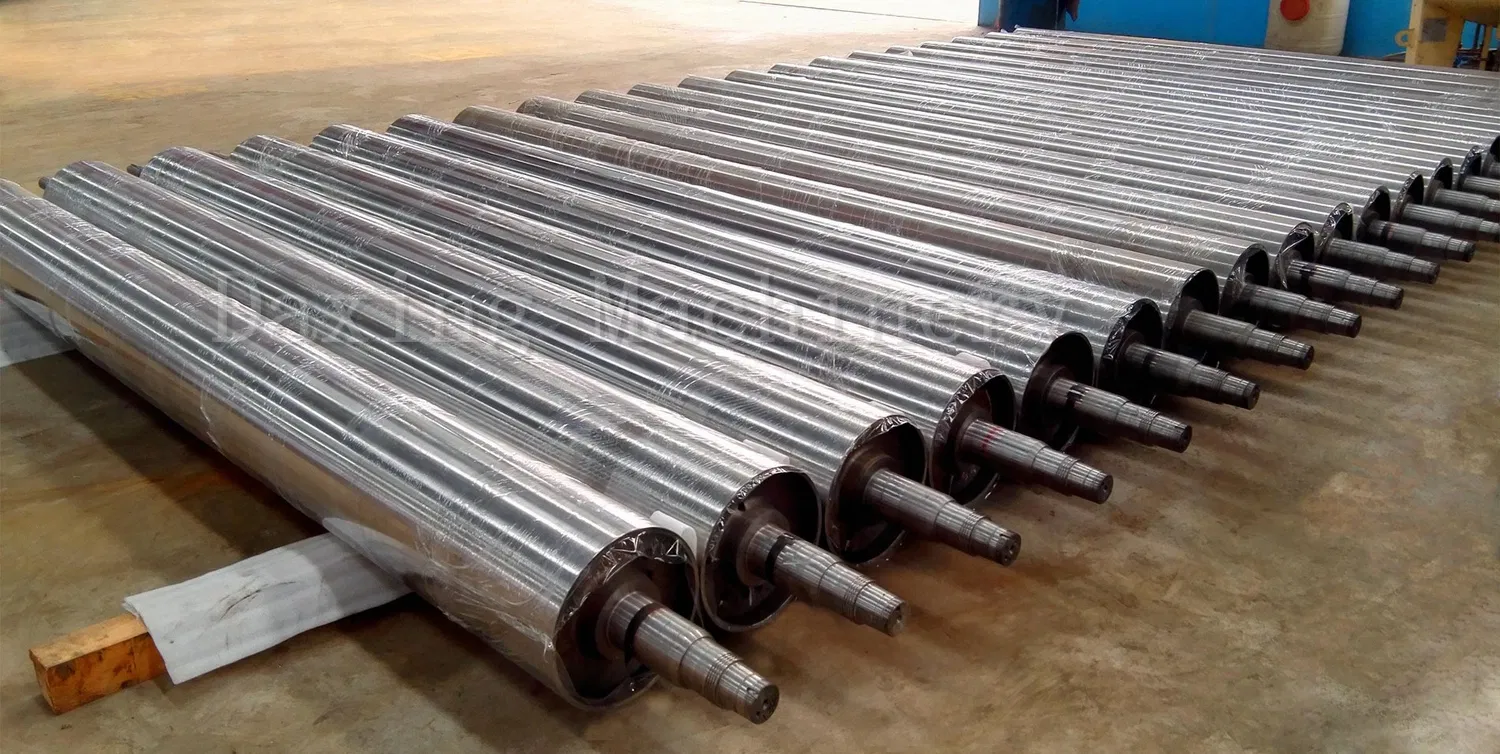The Role of Paper Machine Rolls in the Paper Manufacturing Process
Paper machine rolls are indispensable components in the paper manufacturing process, playing a vital role in the formation, drying, and finishing of the paper sheet. These rolls come in various sizes and designs, each serving a unique purpose in creating the final product. Understanding the functions and types of paper machine rolls is essential for optimizing paper production and ensuring the desired paper quality.
Different Types of Paper Machine Rolls
- Wet End Rolls: These rolls, such as the forming roll, help in the initial sheet formation by guiding the paper stock through the machine. The forming roll is critical in defining the paper's basis weight, moisture content, and fiber orientation.
- Press Rolls: Press rolls, including the transfer roll and the first press roll, remove water from the paper sheet by applying pressure. This process helps improve the paper's strength, stability, and density.
- Dryer Rolls: These rolls, typically heated, further reduce the paper's moisture content to achieve the desired dryness level. Dryer rolls come in various designs, such as steam-heated cylinders or air-impingement dryers, to cater to different paper production requirements.
- Calendar Rolls: Calendar rolls provide the final paper finish, including smoothness and gloss, by applying controlled pressure to the paper sheet. These rolls often operate in pairs, with one roll being harder than the other, to create the desired surface characteristics.
Proper Maintenance of Paper Machine Rolls
Regular maintenance of paper machine rolls is crucial to ensure optimal performance and extend their lifespan. Proper care and attention can help minimize downtime, reduce costs, and improve overall paper production efficiency. Some essential maintenance tasks include:
Regular Inspections and Cleaning
Inspect paper machine rolls for any signs of wear, damage, or contamination and clean them regularly to prevent the buildup of deposits and maintain their functionality. This proactive approach helps identify potential issues before they become significant problems, ensuring consistent paper quality and reducing the risk of unscheduled downtime.
Repair and Replacement
Promptly address any issues found during inspections, such as worn-out surfaces or damaged roll covers, by repairing or replacing the affected components. This proactive approach helps prevent more significant problems and costly downtime. Collaborating with experienced roll service providers can ensure that repairs and replacements are carried out efficiently and to the highest standards.
Choosing the Right Paper Machine Rolls for Your Operation
Selecting the appropriate paper machine rolls for your specific application is vital for achieving the desired paper quality and production efficiency. Careful consideration of the following factors will help you make informed decisions about the types and quality of paper machine rolls that best suit your needs:
Paper Grade and Quality
Different paper grades require specific roll properties, such as surface finish, hardness, and temperature resistance, to ensure optimal results. For example, rolls used in the production of fine papers may need smoother surfaces and tighter tolerances than those used for packaging materials.
Machine Speed and Design
The speed and configuration of your paper machine may dictate the type and size of rolls required to achieve the desired production rates and paper quality. High-speed machines may require rolls with enhanced heat transfer capabilities, while machines with unique designs may necessitate custom-made rolls to accommodate specific requirements.
Budget and Maintenance Capabilities
Balancing cost considerations with your operation's maintenance capabilities will help you make informed decisions about the types and quality of paper machine rolls that best suit your needs. Investing in high-quality rolls, coupled with a robust maintenance program, can ultimately lead to improved paper production, reduced downtime, and lower overall costs.



